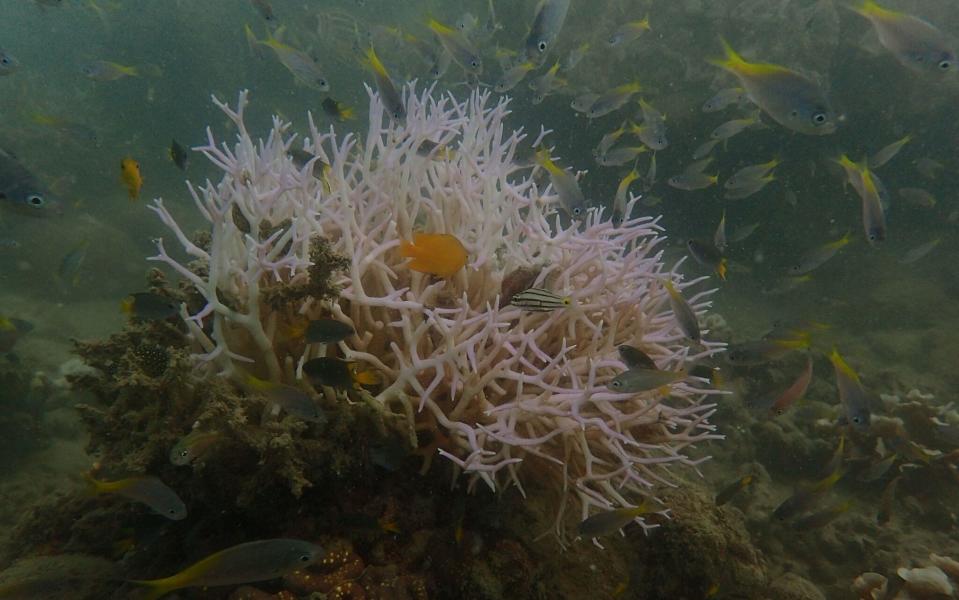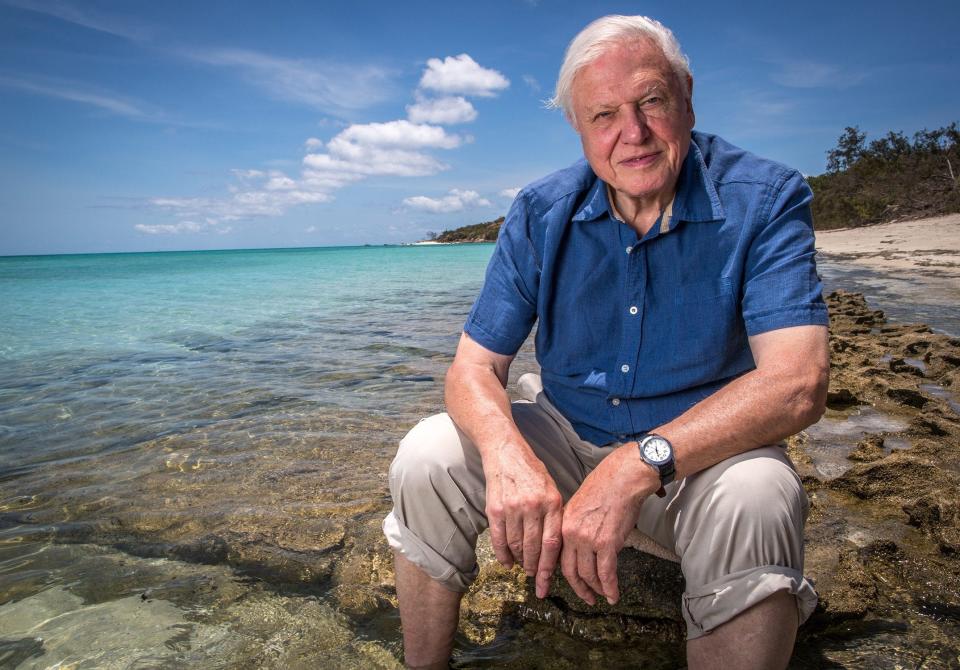New photos reveal fresh bleaching at beleaguered Great Barrier Reef
A heatwave that has brought record-breaking temperatures to parts of Australia – leading to bush fires, power outages and a rise in deaths from heat stress – could have a devastating effect on the Great Barrier Reef.
Though the mercury is set to drop this week, scientists fear the extreme weather event could place stress on the underwater ecosystem, which is still reeling from the worst bleaching events in its history.
Bleaching happens when corals become stressed by high water temperatures, which happened on a massive scale in 2016 when an underwater heatwave ravaged the 1,500-mile reef.
Scientists claim 93 per cent of the reef was affected last year and that 22 per cent of its coral had died as a result. The same scientists now fear the reef could come under attack once again as parts of Australia bake in temperatures exceeding 47C.
According to the Australian Marine Conservation Society (AMCS), which has published photographs of its findings, newly bleached corals were discovered last week near Townsville, Queensland and around the Whitsundays.
The waters off eastern Australia are unusually warm for this time of the year, according to the US National Oceanic and Atmospheric Administration (NOAA), which has placed vast swathes of the Great Barrier Reef on red alert (Alert Level 1) for the next four weeks, meaning coral bleaching is likely.
Parts of the far northern, northern and central reef have been placed on Alert Level 2, indicating mortality is likely. Corals south of Cairns, in the Whitsundays and in parts of the far northern reef, that were badly hit last year, are at mortal risk.
“Signs of new coral bleaching in February, plus the likelihood of extensive severe bleaching and even mortality in the next four weeks, is extremely concerning,” said Imogen Zethoven of AMCS.
“Last year we witnessed the worst bleaching event on record for our reef. Over the entire reef, 22 per cent of corals are dead.”
Around 1.9 million people visit the Great Barrier Reef annually, contributing A$5.6 billion (£2.7billion) to the local economy and supporting 69,000 jobs. However, Australia’s biggest tourism asset appears to be in grave danger due to climate change, which campaigners claim is being exacerbated by the Australian coal industry.
“The government must stop special treatment for the coal industry,” warned Zethoven. “Climate change will be catastrophic for our reef unless we urgently move to cut pollution. We cannot afford to risk such a valuable national treasure.”
In 2016, Telegraph Travel reported how many of the sites used to film the series, Great Barrier Reef, narrated by Sir David Attenborough, had succumbed to coral bleaching.
“We actually went out to the same locations where we filmed a lot of David Attenborough’s Great Barrier Reef series and found significant bleaching over many, many species,” said cameraman and marine biologist, Richard Fitzpatrick. “It was pretty shocking.”
In the hit BBC series, Sir David forewarned about the threats facing the Great Barrier Reef, which in 2015 was spared a place on Unesco’s list of endangered heritage sites.
“The Great Barrier Reef is in grave danger,” said the television naturalist. “The twin perils brought by climate change – an increase in the temperature of the ocean and its acidity – threaten its very existence. If they continue to rise at the present rate, the reef will be gone in decades and that would be a global catastrophe.”
Should I cancel my dive holiday?
Despite the bleak outlook, some dive sites are holding up well.
“A lot of the live-aboard sites are on the edge of the reef, and are flushed by oceanic currents, so they are actually probably the most resilient parts of the reef,” said Fitzpatrick.
Rather than abandoning trips to the Great Barrier Reef, according to reef naturalist, Paul O’Dowd, tourists should consider visiting sooner rather than later.
“My advice to anyone wishing to see the reef is that they get over in the near future not the far,” he said. “It is still spectacular, in many ways, and any reputable operator will have a few relatively unscathed sites on their mooring portfolio.
“You will still see scores of brilliantly coloured fish. However, the issue of whether we have anything to show in a decade, after potentially more bleaching events, is less positive.”





